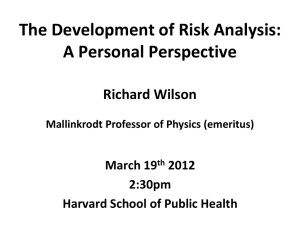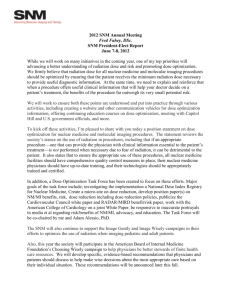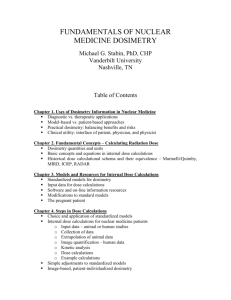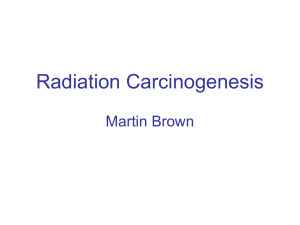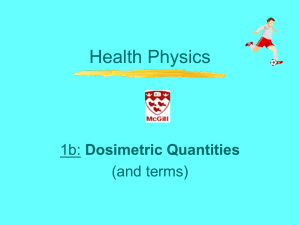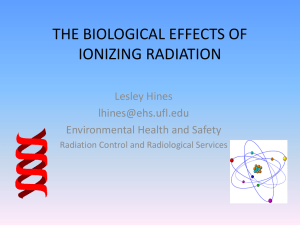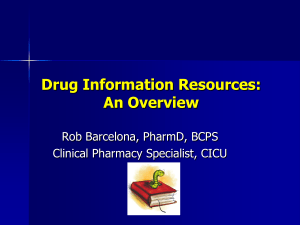Fukushima Emergency Response - Local Sections
advertisement
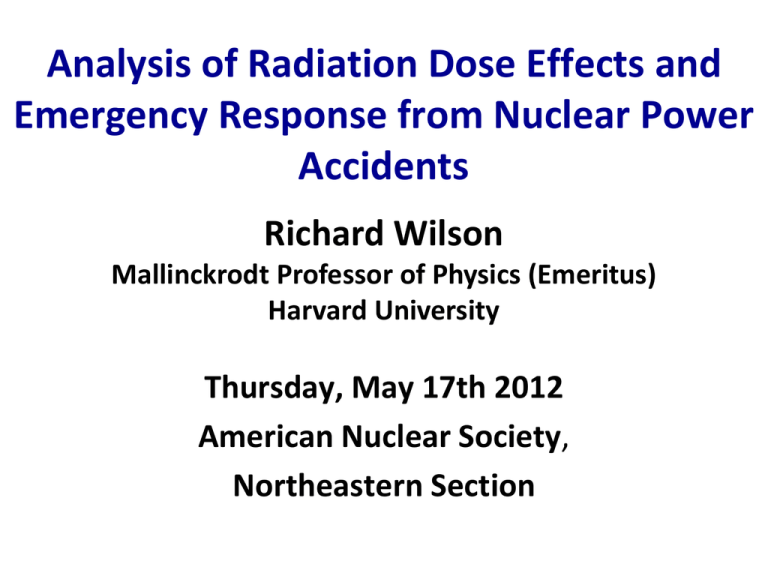
Analysis of Radiation Dose Effects and Emergency Response from Nuclear Power Accidents Richard Wilson Mallinckrodt Professor of Physics (Emeritus) Harvard University Thursday, May 17th 2012 American Nuclear Society, Northeastern Section Responses to Fukushima: NRC correctly has two papers on making reactors safer, ANS is stressing these BUT nuclear power is dead for 50 years UNLESS ANS explains to the public that radiation is not the disaster they think (I continually challenge APS also) DO NOT BE LAZY understand and speak out Topical issue – Fukushima a year agoEvacuate or not? What do we know from previous incidents? Those who do not understand history are condemned to repeat it Medical X rays Radium Dial painters Hiroshima-Nagasaki Windscale (UK) TMI Chernobyl Tokai (Japan) Avoid Acute Radiation Sickness (ARS) ARS can occur if dose in a week is > 200 Rems (2 Sv). But chronic doses can accumulate over years Chronic effects: cancer heart disease genetic effects No cancers specific to radiation Radiation can cause an increase in natural cancer rate Perhaps 30% at 200 Rems (maybe much less) Suggested immediate actions • Prior experience suggests: • Avoid effects of iodine (don’t drink local milk (even mother’s milk) for a month • Evacuate if needed to Avoid Acute Radiation Sickness • If no Acute Radiation Sickness a day or two delay in considering evacuation makes little difference • Let workers get higher doses than normal subject to acute radiation sickness My Estimate of Dose at Site Boundary My Dose at Site Boundary March 2012 calculation – Peak probably noble gases (little effect) followed by cesium. (134 and 137) – Take peak and multiply by width – Dose about 2 Rems (0.02 Sv) and falling – My CAT scan doses last year 2.4 Rems Evaporation Temperature 184°C 671° C 990°C 1750°C Products of Fission Gases (1) Noble Gases (Kryton,xenon) (2) Iodine goes to thyroid: leukemia, thyroid cancers (Do not drink milk for a month) Solids sublimate as temperature goes up (A) Cesium 134, 137. do not stay (B) Strontium, transuranics Only at higher temperature, not much even at Chernobyl Table not broken down by age (MY MISTAKE!) What about Ibaraki? (on way to Tokyo) It looks different with different scale. Dose Negligible Adverse Effects of Evacuation – Stress can increase cancer rates 5% or more – Direct loss of life due to lack of facilities – NO ONE CONSIDERED THESE AT ALL Subsequent study (IAEA, INPO, TEPCO, etc) confirms: •No one got Acute Radiation Exposure •(highest exposure in a worker 30 Rems) •If there are cancers the probability of causation (POC) will be less than 50% in all but a few cases. These are the locations of measurement BEIR report on effects of radiation Not broken down by age These numbers are for high dose RATES Animal studies in 1960s suggested a reduction by 10 if low dose RATES A rcent MIT study suggests the same. EMPHASIZE rare human data deposition at TECHA River Studies after Chernobyl Perhaps a factor of 3 Deposition to NW of plant highest from Tuesday/Wednesday releases Rems/man or manRems? • Traditionally health physicists assume a linear dose response and then it is clear that the societal effect is best expressed in Man Rems or Person Sievert • But here one needs the effect on an individual or the small group being affected then Rems per man is the proper description (emphasized by the late Rosalyn Yalow, Nobel Laureate who died last week) Comparison with other disasters Chairman Gregory Jaczko testimony in US Congress March 17th 2011 Recently, the NRC made a recommendation that: “Based on the available information that we have, that for a comparable situation in the United States, we would recommend an evacuation to a much larger radius than has currently been provided in Japan. As a result of this recommendation, the ambassador in Japan has issued a statement to American citizens that we believe it is appropriate to evacuate to a larger distance up to approximately 50 miles.” What should a decision maker have done (my personal opinion)? • Order an immediate evacuation for many km ? • Make it easy for any VOLUNTARY evacuation – to avoid panic as happened after Katrina NO YES • Do simple steps to reduce exposure to fall out – including measurement YES • ORDER all out clean up for years NO • Facilitate individual towns and people in voluntary steps • Richard Wilson paper in DOSE_RESPONSE (2012): “Evacuation Criteria After a Nuclear Accident: A Personal Perspective” YES Threshold or linearity? It is important that you understand the argument BUT when dose is low it should not matter But do not in public argue with your supporters who reject the threshold arguments Alternate Dose-Response Models Cancer Over Background Excess Dose Low dose linearity is a general argument • Probability of dying in a car accident in Harvard Square is roughly proportional to the number of cars! • If the medical outcomes is not distinguishable • From one occurring naturally then the argument applies • Most cancers • Inherent in the multistage theory of cancer • Lung effects caused by air pollution British Journal of Cancer Vol. VIII, March 1954, No. 1 Sir Richard Doll & Peter Armitage (repeated 50 years later) Cancer caused by a series of steps: Does it matter if Nuclear Power is dead? Problem is importance for terrorism: (1) Take 1000 Ci medical source (2) Add a few pounds TNT (3) Explode in Wall Street EFFECT: (A) Less than 10 people die (situation in Brazil) (B) 20 square miles out of action THIS MAKES ACTION ATTRACTIVE FOR A TERRORIST Even more important • What do you do if someone explodes a nuclear bomb in Boston Harbor? NO • Run away as fast as you can? • Take shelter for 24 hours till radioactivity does and listen to which way the wind is blowing? YES • Then if you are in the plume run fast, NO but which way? Away from explosion? • Sideways away from plume? YES Thank you for listening


